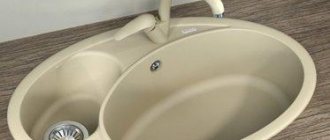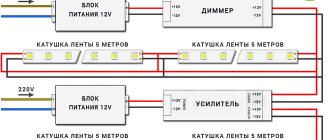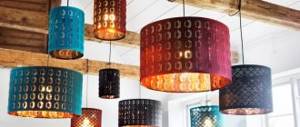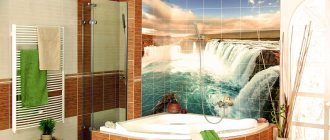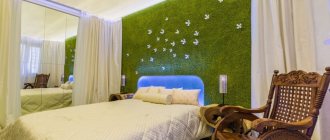Date of publication: July 25, 2020. Category: Lamps.
In order to reduce electricity costs several times, you don’t need to invent a bicycle. The most versatile and effective way to reduce energy consumption is to use LED lamps instead of conventional incandescent lamps and energy-saving light bulbs (compact fluorescent lamps). LEDs were first used back in 1927 and only now have they begun to gain popularity due to their characteristics.
To find out which LED lamps are better for your home, just familiarize yourself with their parameters and distinctive features.
What is an LED lamp?
Any LED lamp consists of three main elements, on which the service life of the device directly depends. So, the design includes:
- Light source – LED;
- Miniature transformer (driver);
- A heatsink that prevents the lamp from overheating.
When choosing a light bulb, you should pay great attention to LEDs, as they may differ from each other. It is better not to purchase a lamp with multiple light sources. For example, white LEDs fail quite quickly, and are generally ineffective; as we know, quantity does not always guarantee better quality. The best option would be a device with one powerful or several blue LEDs, which must be coated with phosphorus. This lamp will emit bright white light.
The transformer is also an important part of the LED lamp; it allows voltage to be converted, so it is very important that it is of high quality.
In turn, the radiator allows you to cool the transformer and the LED, which constantly heats up when the light is on. Such a part should be well ventilated.
Power
Lamp power is perhaps the most important indicator, which determines how much electricity the light source will consume. To determine the most economical option, you need to familiarize yourself with the similar indicators of energy-saving lamps. To do this, you need to learn one simple concept.
Lumen is a unit of measurement that shows the intensity of light. Based on this indicator, an ordinary lamp consuming 100 watts emits light with an intensity of 1300-1600 lm. To achieve the same effect from an LED light bulb, you will need a little more than 15 W, so you can reduce energy consumption by 5 times if you use LEDs.
For simplicity, just remember that 2.5-4 W in an LED lamp is equal to 25 W of a standard light bulb, respectively, 25 W will be 150 W and so on.
Base type
A variety of types of sockets are used for lighting fixtures; we will consider only the most common:
- E27 is the standard and most optimal type of base, which is directly screwed into the cartridge;
- E14 - or “small base” is also screwed into the cartridge, differs only in its smaller diameter;
- GU10 – suitable for spotlights;
- GU5.3 – differs from the previous type only in the thickness of the pins. Installed on lighting fixtures without a rotating function;
- T8 - used if it is necessary to replace standard fluorescent lamps up to 1.5 meters long.
In order to decide on the type of base, you need to find out the type of thread in the chandelier or other lighting fixture.
Colorful temperature
Depending on the temperature of the diode (in Kelvin), the light from the lamp will be cold or warmer. For a comfortable pastime, you should not choose a lamp that emits bright daylight; in this case, the lighting in the room will be more reminiscent of an office or a factory canteen. It would be optimal to choose a lighting device with indicators in the range from 2700 to 3000 K; in this case, you will be able to obtain a soft yellowish glow, reminiscent of sunlight. In order to achieve cooler lighting you will need from 5500 to 6500 Kelvin.
Some manufacturers indicate on the packaging the approximate shade of the emitted glow, for example, “soft white”, “cool white”, “warm white” and so on.
⇡#Bulb lamps with E27 socket
Let's start with the good. All lamps have no pulsation; All but one use IC drivers, and the lamps can be operated at reduced voltage without reducing brightness, and the brightness of the lamps does not change when voltage fluctuates. The minimum voltage at which the lamp can operate and produce at least 90% of the rated luminous flux is given for each lamp in the “Min. eg."
Each manufacturer interprets the power equivalent in its own way (for example, for Lexman 806 lm is 60 W, and for Philips 650 lm is 65 W). OSRAM generally indicates different correspondence to the equivalent luminous flux for different lamps: the matte “pear” 6.8 W indicates 600 lm - the equivalent of 60 W, and the filament “pear” 7 W indicates 806 lm with the same equivalent! This is why I recommend not paying attention to the indicated power equivalent, but looking only at the luminous flux. The power equivalent can be approximately calculated by dividing the luminous flux by ten: 400 lm - 40 W, 600 lm - 60 W, 750 lm - 75 W, 1000 lm - 100 W.
It is also not worth comparing lamps in terms of power consumption - with the same power, they can produce different amounts of light (this depends on the technology and type of LEDs used).
Unfortunately, not all manufacturers honestly indicate lamp parameters on the packaging. This is clearly visible in the table: for OSRAM, Lexman, Philips, the actual parameters are often even better than those indicated, and Uniel (including under the separate brand “Bright Lamp”), Wolta, IEK, Elektrostandard indicate power, luminous flux and equivalent higher than actual.
It comes to the point that the parameters are sometimes inflated by a third: for example, on one of the “Bright Lamp” (Uniel) lamps the power is indicated as 12 W, the luminous flux is 1000 lm and the equivalent is 100 W. In fact, it consumes 9.3 watts, produces only 753 lumens and is as bright as a 75 watt incandescent bulb.
At the same time, the cheaper Lexman lamp, with a specified 11 W, 1055 lm and 75 W equivalent, actually consumes 10.8 W, produces a flux of as much as 1136 lm and shines like a 100-watt incandescent lamp.
Leroy Merlin sells only two Philips lamps from the economy series with a low CRI, which is listed on the website, but not indicated on the packaging of the lamps themselves. That being said, Philips has many good lamps that are sold in other stores.
For some reason, OSRAM bulb lamps are sold exclusively with warm light 2700 K and very cold light 6500 K. The latter are not at all suitable for residential premises.
I was unpleasantly surprised by the Uniel filament lamp. Not only did its actual power amount to 7.1 W instead of the promised 10 W, and the luminous flux was 762 lm instead of the promised 920 lm, it turned out to have a low color rendering index of 74 (on the box it says “more than 80”), and this is the first filament a lamp with a low CRI despite the fact that I have already tested several hundred of them.
The bottom line on E27 bulbs: you can safely buy Lexman (everything is fair, everything is good and a 5-year warranty), OSRAM with warm light (everything is fair, everything is good, but the warranty is 2 years and the price is higher). It is quite possible to buy lamps from the Bright Lamp brand, realizing that their actual power and brightness are lower than promised.
The best buy in the category is Lexman 11 W for 83/94 rubles: 1136/1215 lm, equivalent to 100 W, five years warranty.
Ball lamps 45 mm with E27 and E14
All lamps do not pulsate, which is good. All non-filament lamps are equipped with an IC driver and can operate at significantly reduced voltage.
Lexman and OSRAM are still at their best - actual parameters are in most cases better than stated, color rendering indices are above 80.
Uniel, Wolta and IEK, as I wrote above, indicate inflated parameters on the packaging.
The champion in lies is the Wolta “ball” with an E14 base. Indicated: 6 W, 560 lm, replacement 6 W, CRI Ra greater than 80. Measurement results: 4.7 W, 412 lm, replacement 45 W, CRI 73. The luminous flux is overestimated by 36%, and, which is very unpleasant, low CRI with the stated high level, which is impossible to check without special (and very expensive) instruments.
Previously, Wolta had two series of lamps - “Wolta” in beautiful orange boxes, with a CRI above 80, and “Wolta Simple” in white boxes, with a CRI above 70. Now both of them have a low CRI, while the inscription about Ra is higher 80 left on the boxes.
The most expensive lamp in the category is a matte filament “ball” from Osram with the ability to adjust brightness (dimming) for 298 rubles. The dimmable driver did not fit in the E14 socket, so the lamp is larger than others.
You can safely buy Lexman and OSRAM balls at Leroy.
Best buys in this category:
- Lexman 5.5 W E27 for 65 rubles: 535/582 lm, 60 W replacement, CRI 85, five years warranty.
- Lexman 5.5 W E14 for 115 rubles: 485/520 lm, replacement 55 W, CRI 85, five years warranty.
- Lexman 8 W E27 for 120 rubles: 808/842 lm, replacement 80 W, CRI 85, five years warranty.
- Lexman 8 W E14 for 136/148 rubles: 805/862 lm, replacement 80 W, CRI 85, five years warranty.
- Lexman filament 4 W E27 for 135 rubles: 434/463 lm, replacement 50-55 W, CRI 82-83, five years warranty.
- Lexman filament 4 W E14 transparent for 135 rubles: 429/489 lm, replacement 50-55W, CRI 83, five years warranty.
- Lexman filament 4 W E14 matte for 142 RUR: 398/467 lm, replacement 45-50 W, CRI 81-82, five years warranty.
Lamp shape
You should not neglect such an indicator as the shape of the LED lamp, because it is quite important. There are two types of lamp shapes:
1. Open type LED lamp. Such light sources do not last long and quickly fail;
2. A closed-type LED lamp is more reliable, but also has its pitfalls. When purchasing a closed-type device, you need to pay attention to the LED, since quite often unscrupulous manufacturers install the cheapest elements in such lamps. To avoid counterfeiting, it is best to choose blue LEDs with phosphor coating.
Ripple
Poor quality lamps pulsate strongly, this absolutely should not happen. The fact is that during pulsation, the light from such a bulb blinks. The human eye cannot recognize this flickering, but it acts as an irritant that affects the nervous system, as a result of which a person quickly begins to get tired and experience irritability.
In order to identify such a defect, it is enough to point a cell phone camera at the lamp. If the image blinks, it means that such products are not worth buying.
Ten best LED lamp models
10. ERA LED T8 9W 4000K G13
This is one of the cheapest models included in our ranking of the best LED lamps of the year, but this fact does not mean that its quality leaves much to be desired. It, like more expensive designs, can last for a long time. Its average service life is 30 thousand hours when switched on, so if you do not keep it burning constantly, it can work much longer than 3 years. This design is absolutely safe from an environmental point of view; after use it must be disposed of along with household waste.
More: TOP 10 best sawing machines, how to choose a tabletop circular saw
The degree of electricity consumption is minimal - it is only 9 W. Another important quality is that these products are able to withstand significant voltage changes, in particular, they will operate stably within a range of 190 to 250 V. The operating temperature range is also quite wide - from -25 to +50 degrees. The light bulb has a completely waterproof body, so it can be used even in conditions of high humidity and even outdoors. It doesn't weigh too much - only 167 grams.
Advantages:
- Very long service life;
- Standard base size - fits most cartridges;
- Long warranty of 2 years;
- Slight heating of the device;
- Possibility to use outdoors due to the presence of a waterproof housing.
Flaws:
- Due to its tubular shape, it can be problematic to use it in chandeliers.
9. V-Tac VT-1853 E27 10W 806lm
This is a fairly well-known model, largely due to the fact that it is a standard design. Its color temperature is between classic incandescent bulbs and fluorescent lamps. In terms of illumination, this model fully corresponds to products with an energy consumption of 60 W. Perfect for indoor use, not recommended for outdoor use. Brightness is not adjustable. It is allowed to install it in rooms with low temperatures, for example, on staircases.
The model is designed for connection to a standard electrical network with a voltage of 220 to 240 V and a frequency of 50 Hz. The light bulb fully complies with all existing electrical safety standards developed for household appliances. Consumes only 10 W of energy, a standard SMD LED is installed inside it. Extended lighting angle – 200 degrees. The model is durable - it can work for about 20 thousand hours and is not sensitive to voltage surges.
Advantages:
- Very long service life;
- The plastic flask with a matte finish will not break even if dropped from a considerable height;
- The shape of the lamp is close to a classic incandescent lamp, so it can be easily installed in chandeliers and other lighting fixtures.
Flaws:
- There is no way to adjust the brightness of the lighting.
Osram LED Superstar Classic A 75 Dimmable E27 10W 1055lm
This is a rather expensive model, which is distinguished by very good workmanship and has an expanded angle of incidence of light - it reaches 260 degrees, thanks to which the light bulb can be used even without a lampshade and the addition of reflective elements. It produces a rather soft light with a yellowish tint, which allows you to give the room additional coziness. The structure is placed in a white housing that does not absorb light rays, so almost all of them go into the room.
The bulb has a matte finish, due to which the light is diffused quite evenly. The dimensions of the product are small - quite comparable to a classic 40-watt incandescent light bulb. The base diameter is standard and fits most cartridges. The relatively high price is due to the fairly long service life of the product - the manufacturer claims 25 thousand hours of operation, but based on the results of experiments it was determined that this figure is greatly underestimated. Subject to basic operating conditions, it can be increased by 10-12 thousand hours.
Advantages:
- Long period of operation;
- Diffusing matte bulb that allows you to provide soft and bright room lighting.
Flaws:
- High price.
7. IKEA RYET LED E27 13 1000lm
The main distinguishing quality of this product is to provide the room with soft daylight that is not too bright. Even one such lamp will be quite enough to provide fairly good lighting for a large room. The luminous flux is very decent - 1000 Lumens, but this has practically no effect on the power of the light bulb, which does not exceed 13 W, due to which it can be classified as energy consumption class A+. Another important point is instant switching on - there is no time delay, unlike a neon or light-saving light bulb.
More: TOP 10 best manufacturers of plastic windows, how to choose?
The bulb has a matte finish, due to which the light is excellently diffused, reaching even the farthest corners of the room. The dimensions of the lamp are average, the base is standard. When using this lamp, your eyes will not get tired even with fairly delicate work, for example, when embroidering or knitting; accordingly, they will be even more comfortable while writing or working on the computer. The manufacturer declares not only the number of working hours of the product (25 thousand), but also introduces such an important parameter as the value of switching cycles (in other words, on/off), which is also 25 thousand. If necessary, a lighting control system can be organized through a special rheostat. The driver for this model is based on a controller from Marwell, which makes the life of the light bulb even longer.
Advantages:
- Excellent efficiency;
- Withstands severe voltage surges;
- Produces quite pleasant lighting.
Flaws:
- It will be quite expensive, however, if you calculate the consumption of traditional incandescent lamps, the price will be quite reasonable.
Tagan TG-E2701 E27 10W 800lm
This lamp fully corresponds to the classic design with a 60 W tungsten filament, but it itself consumes about 10.5 W. Accordingly, the operating efficiency is about 6 times. The color temperature is quite mild - between daylight and yellow light, with a slight tendency towards yellowing. The light distribution angle is quite large - over 237 degrees. At the same time, the overall dimensions are not too large - the length of the model is 118 mm, including the base. The diameter is also quite acceptable - 60 mm: it does not exceed the size of an ordinary light bulb. If necessary, the design can be integrated into a system with adjustable brightness.
The base is ceramic and is not sensitive to strong heat, which can occur due to a loose fit of the cartridge to the base. It is worth noting that this design does not contain heavy elements such as lead or mercury, so it is absolutely environmentally friendly, so it can be installed even in children's rooms, schools or kindergartens. As the manufacturer indicates, the average service life of this model is within 25 thousand hours.
Advantages:
- Good brightness;
- Pleasant light;
- Made from environmentally friendly materials;
- Long service life.
Flaws:
- In some cases, the base may not fit too tightly to the socket, causing the lamp to begin to heat up.
Philips Dimmable LED E27 8.5W 806lm
This is a rather original model; in terms of design, not a single product included in our rating of the best LED light bulbs can compare with it. However, it also has some peculiarities. First of all, the bulb is made of fairly thin glass, so during installation and subsequent operation you should be as careful as possible so as not to accidentally damage it. The light bulb features reduced power consumption - only 7.5 W, and even at this consumption it will correspond to a 40-watt lamp. For a small room, one will be quite enough.
If the room is of a decent size, then it is quite acceptable to install several similar light bulbs at once. The country of origin immediately speaks of the high quality of the product, since it is produced in the Netherlands; not a single such original Chinese-made light bulb can be found. If one of these comes across on the market, then it is definitely a fake.
Advantages:
- Original appearance, similar to a classic light bulb;
- Reasonable cost;
- Reduced energy consumption.
Flaws:
- There are many fakes on the market; finding original products is problematic.
Philips A60 LED E27 7W 806lm
This is one of the most expensive models that are presented in our rating, but this design is distinguished by a fairly bright light, the level of which is equivalent to a traditional incandescent lamp of 85 W, although it itself consumes only 11 W. The declared service life is not too long - only 15 thousand hours, which, in principle, is not too surprising, since this model, due to its high brightness, will wear out faster than weaker models. This lamp is well suited for small spaces due to its small light beam, which diverges only 130 degrees. However, this problem can be easily solved by installing a light bulb in a reflective lampshade.
More: TOP 10 best music centers with karaoke
The current supplied to the lamp is only 95 mA, which is much lower than the minimum dangerous dose for human health. In addition, the lamp is produced without elements that can cause illness. The luminous flux is warm white.
Advantages:
- Low energy consumption;
- Pleasant flow of light;
- High quality manufacturing.
Flaws:
- High price.
Philips SceneSwitch A60 E27 8W 806 lm
This is a fairly economical LED lamp, which has lower consumption even compared to other similar products. In terms of luminous flux, this model is equivalent to a 60 W incandescent lamp, taking into account that it itself consumes only 7.9 W. Unfortunately, this product does not have a very high radiation level - only 154.7 degrees. The most optimal solution for a spacious room would be to install several similar light bulbs in a chandelier with reflective elements.
The base here is standard and fits tightly to the cartridge, which eliminates the possibility of excessive heating. The shape is pear-shaped, the bulb is made of heat-resistant plastic, which has a matte finish that ensures good dispersion of the light flux.
Advantages:
- High-quality production, eliminating heating of the base during operation;
- Acceptable service life.
Flaws:
- Insignificant angle of light scattering.
2. Megaman LED E27 7.4W 810lm
It’s not for nothing that this model ended up in second place in our review of the best LED light bulbs - we placed it here not only due to the high price-quality ratio, but also due to the increased level of energy savings. The fact is that the consumption class was defined as A++, and this was done not only by the manufacturer, but also by specialists. This product is equivalent to a 60 W incandescent lamp, and it is characterized by a fairly wide viewing angle of 273 degrees. The pear-shaped shape allows this design to fit well into the shades of classic and modern chandeliers.
Unfortunately, the ability to adjust the brightness is not provided here, especially since the lamp copes well with serious voltage drops. In addition, the power consumption rate is 7.3 W, which allows you to save a lot on your electricity bills.
Advantages:
- Low energy consumption;
- Convenient shape;
- High level of light dispersion.
Flaws:
- Lack of brightness adjustment.
IKEA LEDARE LED E27 13W 1000lm
This is a recognized leader among all LED lamps currently on sale. The model is quite powerful, and also has a very reasonable price. Externally, it is practically no different from a standard incandescent lamp, at least if we take into account the shape of the product. Despite the fact that these products are made in China, they are of very high quality, the entire manufacturing process is under the direct control of specialists from the manufacturing company, so production in China does not affect the service life at all.
There is no cooling radiator on the case, but with this design it is not needed, at least with such low power. Such a light bulb is well suited for dry rooms, regardless of temperature; in any case, it is able to maintain all its performance qualities at temperatures from -25 to +40 degrees.
Advantages:
- Acceptable price;
- Good production and assembly quality;
- Bright light, one light bulb is enough for a room of about 18-20 square meters.
Flaws:
- Some may be wary of the release in China, but otherwise there are no shortcomings.
Manufacturer
In stores you can find LED lamps, both from well-known manufacturers and from unfamiliar companies. In order to choose the best quality light bulbs, you should pay attention to the manufacturer’s profile. The best LED lamps for the home, the ratings of which are easy to compile yourself, will meet all requirements and have a warranty period.
If a company is engaged in tailoring, then most likely it is not able to offer high-quality lighting elements. It is best to choose brands that specialize in electrical and lighting equipment. The following manufacturers have proven themselves well:
- Philips;
- CREE;
- OSRAM;
- GAUSS;
- Nichia;
- LED Engine.
By choosing products from one of these companies, you can be sure that LED lamps will last a long time. Of course, the cost of lighting elements from world-famous manufacturers will be higher, but if you take into account that such a light bulb will have to be changed no earlier than after 5 years, then the savings are obvious.
Rating of manufacturers of LED lamps for home
Due to their price, LED lamps are the most counterfeited not only in Russia, but also far beyond its borders. And the point is not even in the large number of Chinese-made replicas - they mainly try to produce products under their own brands, but in the fact that famous devices are counterfeited in a handicraft way.
Today the following companies are among the leaders:
Philips (Philips) , a cousin of Karl Marx and his offspring, opened their own business back in 1891. Since then, a lot of water has passed under the bridge, but Philips does not stand still, still being one of the flagships in the production of household, and not only, appliances.
Osram is no stranger to lighting. The company started in 1906. Production covers several industries: household lighting; lighting for clinics, concert venues and electronics for the automotive industry. By right, the best manufacturers of LED lamps for the home.
Gauss is Russian-made lighting equipment of decent quality. Gaus products are widely used in the Ikea chain of stores, in popular restaurants and crowded places that require special lighting.
ASD is a Russian company that produces a wide range of lighting products - LED panels and lamps, spotlights, LED strips, etc. The range also includes energy-saving lamps and fixtures. Production is located in China.
Feron – 19 years on the Russian market. Production has also been moved to China and is distinguished by a large assortment at a relatively low price.
Navigator is a domestic brand, produced in the city of Klin. Wide selection of LED lamps of various wattages.
Camelion is a Chinese company that is loved by users for its accessibility and ease of replacing parts themselves.
We've sorted it out with the manufacturers, now let's decide how to choose the right LED lamp for your home - ceiling, wall or table. A review of the best models in each category, compiled from reviews, will give you the opportunity to choose the optimal one in terms of power.
Radiator
The presence of a radiator for LED lamps is mandatory, so you should refrain from purchasing models without it. Some manufacturers use a trick and install a plastic outlet in the lamps, which, in fact, does not perform a cooling function. Plastic will not last long, and the cooling efficiency of this material is much lower than that of aluminum. Such LED lamps for the home, reviews of which can be found on the Internet, quickly fail.
It is worth noting that frosted lamps do not allow you to determine the presence of a radiator, so it is better to give preference to opaque devices in which you can see all the elements.
Light color
The light that the source studies can be of different “temperatures”. You've probably noticed the difference between fluorescent lamps and incandescent lamps. LEDs can also shine in different ways. Want to choose the right shade? Use our scale. The higher the glow temperature (indicated in Kelvin), the less saturated it will be.
| Warm color | Candle | 1800-2600 K |
| Sunrise Sunset | 2800-3600K | |
| Neutral color | Moonlight | 3800-4400 K |
| Daylight | 4600-5200 K | |
| Cool color | Cloudy sky | 5400-6000K |
| Overcast | 6200-6600K |
The gradation is from dark orange (candle) to dark blue (cloudy weather). In most cases, the best choice of LED lamps for home and living spaces is in the range of 2600 to 3500 K - it is slightly yellowish and familiar to the eye. Moonlight and daylight are well suited for offices and workplaces - they illuminate objects well, but at the same time slightly irritate the eye with excessive contrast. To determine the temperature, look at the product packaging - all manufacturers indicate the numerical value of the luminous flux. Sometimes it is indicated in the name - it can be soft white or warm white.
Work resource
When choosing an LED lamp, you should definitely pay attention to the working resource. This characteristic will allow you to determine how many hours the lighting element can work. Today, manufacturers have achieved that this figure is up to 50,000 hours, which in turn is 15 years. You should not trust such information, since, even taking into account technological progress and other factors, LEDs change over time and begin to work worse.
It is better to focus on the warranty period of the lamp, which ranges from 3 to 5 years. Based on this information, you can determine how long the light bulb will actually last.
What is better: LED lamps or energy-saving ones
So, which lamp is better: LED or energy-saving? This question can be answered by looking at a brief comparison between them.
In terms of service life, LED lamps are significantly ahead of energy-saving lamps. For 80 - 100 thousand hours of burning LED lamps (about 8 years), energy-saving ones burn for 4 - 12 thousand hours (from 3 to 4 years).
The LED lamp is not afraid of frequent switching on and off; it “lights up” immediately after switching on. “Start - warm-up” energy-saving is 1 minute, although this is a minor minus. Both lamps practically do not heat up and are completely fireproof.
For human health, LED lamps are preferable; they do not contain harmful components, while energy-saving lamps contain mercury, which for some consumers is a deterrent when purchasing.
When there is low power or frequent power fluctuations in the network, an energy-saving lamp may simply refuse to work, which cannot be said about an LED lamp, although its service life is reduced by up to 25%. In terms of power consumption, LED lamps are more energy efficient. Also, economy lamps require special disposal.
Well, and of course the price. In this matter, the LED is inferior to its leading position to the energy-saving lamp, although its cost is more than compensated. After studying this comparison, you will certainly be able to determine for yourself which light bulbs are better, LED or energy-saving, and make the right choice of lighting for your beautiful chandelier.
If you look for differences in these two lamps, it will turn into some kind of absurdity. The thing is that, according to their operating principles, both lamps are completely different. The only thing they have in common is that both LED and energy-saving ones provide light.
Despite the fact that we would like to bypass the cornerstone of the features of lamps, we still have to summarize something, if only in order to make a final conclusion about which type to prefer when purchasing. It is these interesting features related to each type of lamp that we will talk about further.
LED light bulbs
Since the bulk of the electrical energy in our houses and apartments, except those equipped with stationary electric stoves, is consumed for lighting, replacing incandescent lamps with energy-saving ones will significantly save money.
The LED lamp, unlike incandescent lamps, has a number of undeniable advantages. The luminous efficiency of such a lamp is 5 times greater than that of a conventional incandescent lamp, which makes it possible to reduce energy consumption by up to 80%, for example, replace a 100-watt incandescent lamp with an LED analogue of 12–20 watts.
An LED lamp lasts up to 50 thousand hours, and an incandescent lamp, according to technical indicators, will last up to a maximum of 1.5 thousand hours, although in practice it is even less. If we compare in terms of kWh savings, then based on the number of lamps, hours of burning and power, savings from 50 to 100 kWh can be achieved per month.
Typically, consumers are “scared” by the price of an LED light bulb, the average cost of which varies among suppliers from 100 rubles. for one 12 watt lamp.
The average price of a regular 100-watt incandescent lamp is 20 rubles. But, if we take into account the service life, then for the period of operation of the LED lamp of 50 thousand hours, you will have to purchase up to 50 pieces of incandescent lamps, with a total cost of 1000 rubles. And this difference will really help you save money.
It is worth purchasing LED lamps based on the payback period. Thus, according to experts’ calculations, with an electricity consumption of up to 100 kWh per month, a 12-watt lamp will pay for itself in a little more than a year, with a monthly consumption of 100 to 600 kWh - about 2.5 years.
Energy saving light bulbs
Energy-saving fluorescent lamps are in great demand among consumers on the market.
Unlike an incandescent lamp, where light is converted by passing electrical energy through a tungsten filament, light in an energy-saving lamp is converted from the ultraviolet glow of a gas discharge, which is formed by passing an electrical discharge through the gas filling the bulb.
The advantages of fluorescent lamps include light output, economical energy consumption, they heat up less and have a long service life. Consumers often complain that lamps burn out much faster than the service life declared by the manufacturer.
Why do energy-saving lamps burn out quickly?
The service life of fluorescent lamps is affected by operating rules; they cannot be turned on and off frequently, and power surges in the network are also negatively affected. That is, it is not always necessary to blame the quality from the manufacturer; sometimes energy-saving ones burn out due to improper operating conditions.
Also, energy-saving lamps should not be touched with your hands, because you will simply leave fat on their surface, which in turn will lead to burnout. If you accidentally touch the surface of such a lamp, wipe its surface with a lint-free cloth soaked in alcohol.
Energy-saving lamps also contain mercury. If you accidentally break a lamp, carefully assemble everything, do a wet cleaning with a solution of potassium permanganate and ventilate the room well. Burnt-out lamps cannot simply be thrown into the trash; they are subject to mandatory disposal by specialized enterprises.
